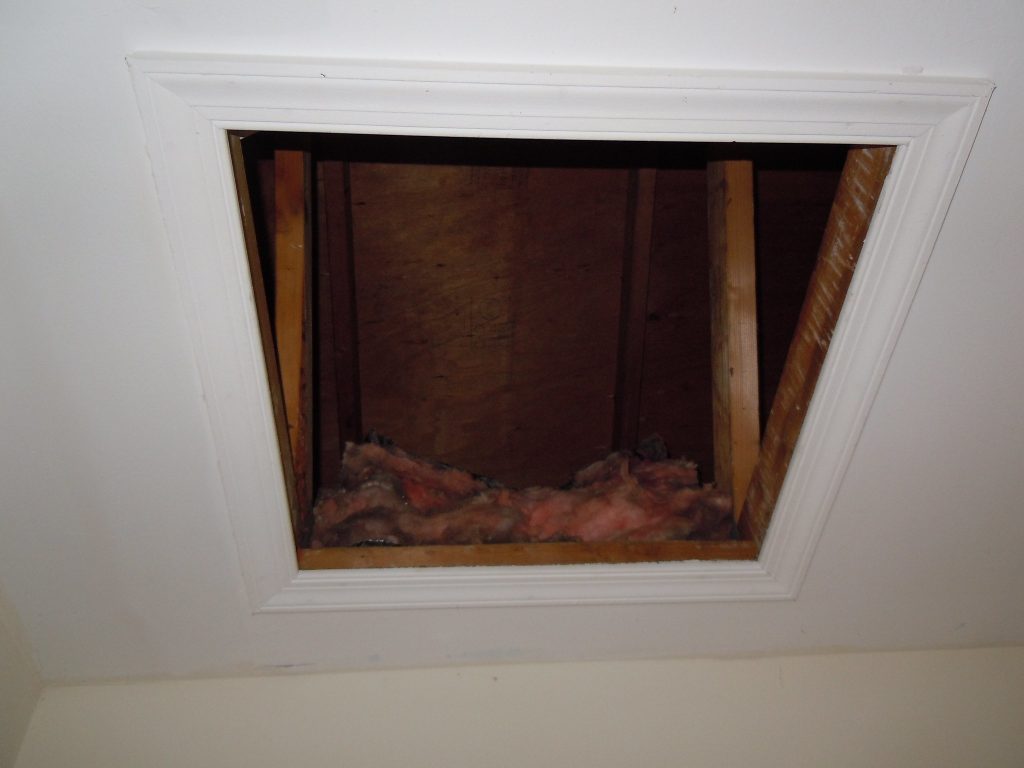While not all homes have an attic, most do. Also referred to as a “loft” or “garret,” the attic is a natural byproduct of putting pitched roofs on homes. Buildings with flat roofs do not have any attic space, but houses are rarely built in the United States with flat roofs. Those flat roofs can have problems with leaking, as rain does not run off them quickly, and snow can build up until it exceeds the structural strength limitations of the roof.
That space under the rafters of a pitched roof can be used in several different ways. Some homes are built with dormers, turning that space into usable living space. Other home designs don’t invest that much in the attic space, relegating it to no more than storage. This is especially true of homes without a steeply pitched roof, as the attic space in these homes is less usable.
Whereas many older homes were built with stairs leading up into the attic and with the attic floored over for storage, newer homes don’t often have these stairs unless the attic is intended to be used as living space. The stairs take up valuable floor space and add to the cost of the home. So, leaving them out reduces the house’s purchase price, giving the home buyer more value for their money. Unfortunately, it also reduces the usability of the attic.
This is not to say that the attic space is not usable. The 2012 residential building code requires that any attic of more than 30 square feet (a space 5’ x 6’) and with a peak height of 30” or more have some access. Additionally, any attic which houses mechanical equipment, such as HVAC air-handling systems, must have access. This access is referred to as a “scuttle hole,” and attics which are accessed by scuttle holes are referred to as a scuttle attic.
Besides requiring a scuttlehole for attic access, the building code requires a minimum opening size. For a scuttle hole installed in the ceiling of the home, the rough framed opening must be a minimum of 22” x 30”; in the case of a house where the scuttle hole is in a vertical wall, such as the wall of a garage which is open to the rafter, the scuttle hole must measure the exact minimum dimensions. The opening is covered by a simple board, often cut from a scrap piece of drywall.
Attic Ladder
Many homeowners install one in this space if the home doesn’t have a pull-down attic ladder. This can be problematic, as the attic ladder typically requires a 22.5” x 54” hole. As this is larger than the standard scuttlehole size, it is often necessary to enlarge the hole. This isn’t as difficult as it may seem.
To start with, for the scuttle hole to have a 22” framed opening width, the ceiling joists have to be mounted with a 24” spacing rather than 16”. This leaves 22.5” between the joists, a bit more than the required 22”.
As for the length, the contractor cuts and installs blocks of 2”x 6” dimensional lumber, or whatever size is used for the joists, between the joists and finishes out the opening. Removing one of these and reinstalling it further down means enlarging the opening is not a problem. The drywall for the ceiling can then be cut out, providing a larger opening for the attic ladder to be installed. At the same time, remove the trim molding attached to the ceiling.
Installing an attic ladder is extremely easy once the framing has been opened to provide sufficient room. It is helpful to temporarily install two pieces of 1”x 4” across the ends, overlapping the edges of the hole by ¾”, to provide something for the attic stairs to sit on while they are attached.
The attic ladder is lifted through the hole and placed, resting on the temporary supports. Adjust the position of the ladder unit, with the hinge end flush up against the header. Door shims can be used on the unit’s sides and far end to center it. Then it should be screwed into place, starting at the hinge end, with lag screws.

Finish up the ladder installation by measuring the height from the floor to the ladder frame. Then, cut off any excess length from the legs according to the instructions supplied with the ladder.
Once the attic ladder is installed, the opening will be finished by attaching door and window casing molding around it and painting it to match the ceiling.
What About a Roof Scuttle?
Buildings with a flat roof may have a roof scuttle rather than an attic scuttle. This is an access hole for maintenance that allows access to the roof. This is not typically done in homes but is expected for commercial buildings.
Unlike an attic scuttle or attic ladder, the roof scuttle must be waterproof to prevent rain from leaking in. Security is also a concern, as people could use the roof scuttle to break into the building. These problems are solved by installing a metal roof scuttle unit designed and manufactured specifically for this purpose. Some roof scuttles have a built-in ladder, much like an attic ladder.




